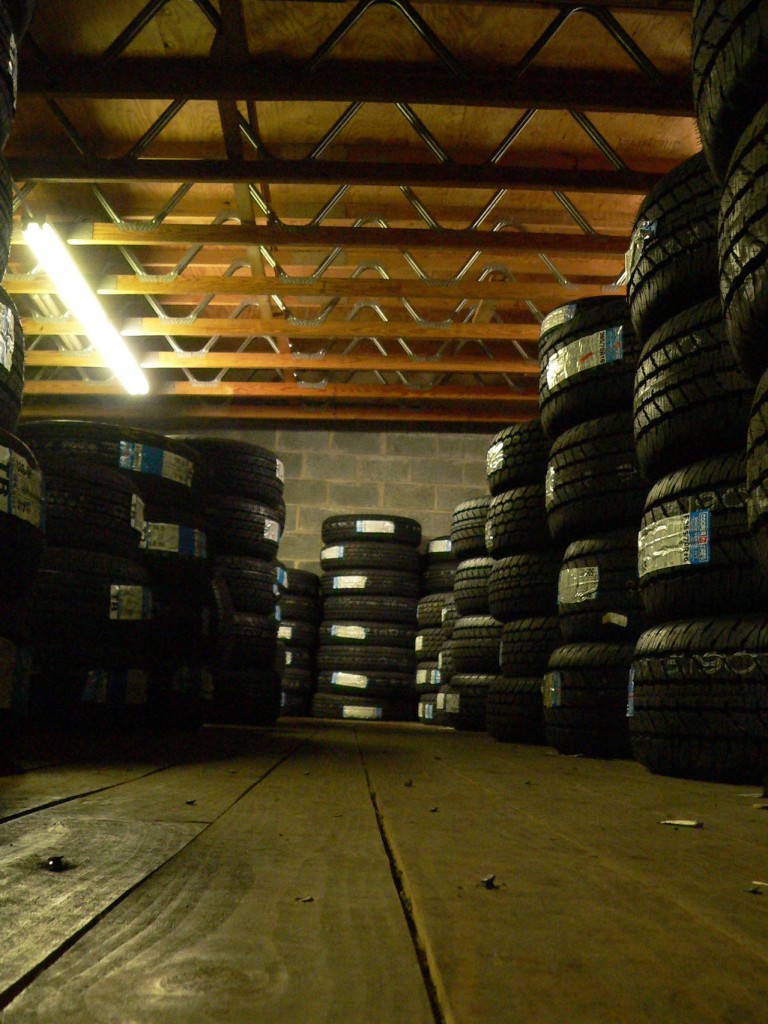Buying “New” Old Tires
Tires have two seasonal sales peaks in the year. October is usually the start of the fall season sale promotion that encourages consumers to buy winter tires. Thankfully, San Antonio does not get blizzards or ice storms so winter tires don’t apply to us. However, new sale gimmicks are a good opportunity to inspect or replace the old tires on your vehicle.
When buying are a reminder to inspect your set of tires and according to our research there is one thing you must be aware of. As a consumer, you must be aware that the new tires you are buying are actually new and not unsold inventory. New tires that have been in storage for several years can unintentionally be sold to customers as brand new tires.
Buying new tires that are already 1-2 years old is sort of like buying food that is already near its expiration date. Plus, you run the risk of paying for old rubber.

Old “New” Rubber
An old tire that has never been used can look exactly like a brand new one above. The tread is good, and the manufacture stickers may still be on it. When tires reach a certain age the rubber begins to dry out and crack. That can make it unsafe for road use because it may run the risk of blowing out, falling apart, or lose traction during bad road conditions. That is why one should know how to find the date a tire was made before having them installed on your vehicle.
So why isn’t this fairly common knowledge? Because tires don’t have expiration dates. Automotive experts at Edmund say that not even the National Highway of Traffic Safety Administration (NHTSA) has a specific guideline for tire aging. Every set of tires goes through a different lifespan so there is no way to calculate a general rule for how long a tire should be kept on the road.
How to Age a Tire
When shopping for a new set of tires take a look at the tires themselves. You will notice that on the sidewall there are a series of numbers in front of the word “DOT.” That stands for the Department of Transportation and the numbers the follow are like the tire’s social security number. Those numbers tell you the size, manufacture code, where it was made, and there are two sets of numbers that tell you what week and year it was made. Those are the numbers you need to focus on, or ask an attendant to show you.
For example, if you see the number 1214 that means it the tire was made on the 12th week of 2014. These numbers are usually the last four numbers on the DOT code. All tires made from 2000 to now have this number pattern. Tires made before 2000 have a different code, but any tire over 10 years old is not recommended for road use. They are too old.
Spare Tires
Throwing away a spare tire that have never been used may look like throwing away money. Spare tires are meant to aid you for a short period of time and it is best practice to replace them when you purchase a new set of tires for your vehicle. We recommend you avoid the risk of driving with a 7-9 year old spare tire after experiencing a flat or blow out.
Fresh New Tires
In summary, when you go to a retail store to buy new tires you may actually be buying “new” tires that have been in storage for several years. As a consumer, you have the right to ask for the newest tires because that’s what you are paying for. Knowing how to figure out the age of a tire means being savvy about your purchase.
Here 4 You
In any case, if your or a loved one has been injured in an accident Davis Law Firm is here 24/7 to listen to your case! Our team of legal representatives offer free consultation so there is zero risk in calling. Don’t let the negligent actions of others effect the rest of your life, call us today! (210) 444-4444
